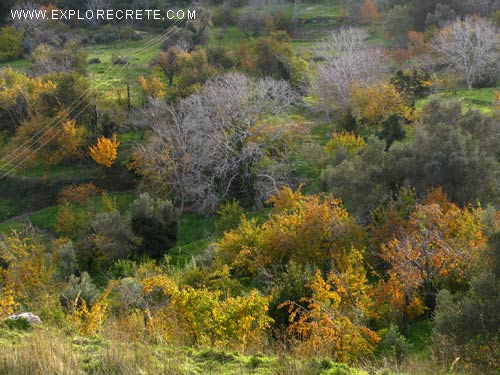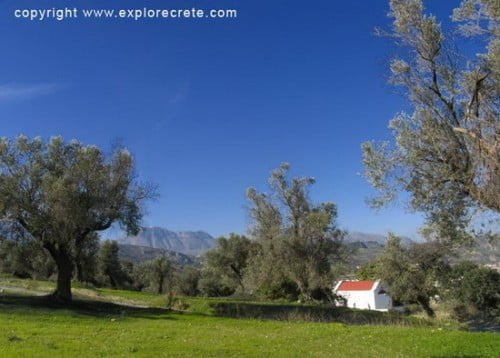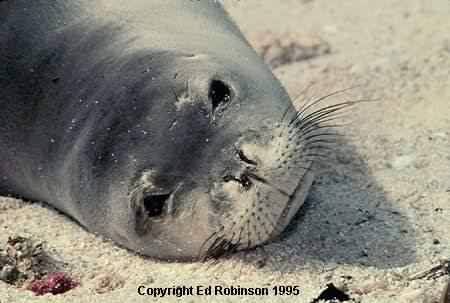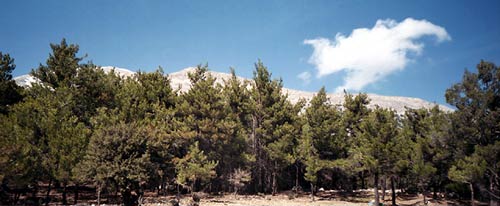Gypaetus Barbatus (bearded vulture) in Crete
BEARDED VULTURE (Gypaetus barbatus)
The Bearded Vulture is one of the rarest raptors in Europe. It inhabits exclusively mountainous areas (500-4,000 m). It can be found usually above the tree line, in rugged areas with steep slopes and in alpine pastures. Its main food source is bones of dead animals (small – or middle – sized), for which it searches alone or in pairs.
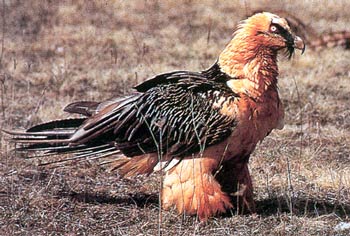
The Bearded Vulture defends huge areas (territories), in which the pair feeds and breeds. The pair rarely tolerates the presence of other mature individuals of the species in, their territory.
The Bearded Vulture – Description The Bearded Vulture reaches 1.10 m in size (from-head to tail), its wingspan is around 2.8 m and it weighs between 5-7 kg. The mature birds can be easily recognized by the long, pointed wings and the wedged tail; however, its form rather recalls a large falcon than a vulture. Its breast and under parts are usually coloured deep orange.
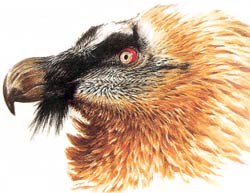
The Bearded Vulture acquires this colour by rubbing against calcareous rocks containing iron oxides. In areas where rocks lack iron oxides, the colour of the bird’s under parts is usually “dirty white”. On the head, close to the beak, the bird has a long tuft of feathers which looks like a beard. It is this characteristic “beard” that gives the bird its scientific name, Gypaetus barbatus.
The Bearded Vulture – Distribution The Bearded Vulture is the rarest species of vulture of the four found in Europe. It is found in the Pyrenees (Spain – France, 77 pairs), in the island of Corsica (8 pairs) and in the Balkans (2-3 pairs), while in the Alps, where the species has been reintroduced, there are 50 individuals and two pairs. In Greece, few individuals can be found in the region of Sterea Ellada, Macedonia and in Thrace, while the main population can be found in Crete (9-10 pairs). The population in Crete is the only viable population in Greece and the Balkans, and it constitutes the biggest island population of the species in Europe and the world.
The Bearded Vulture – Biology & Behaviour The Bearded Vulture inhabits areas of high altitude (1,500-4,000 m), but during winter, when the high mountains are snow-covered, it can be seen in areas of lower altitude (500-800 m). It nests during the winter period between mid-December and the end of January in small caves on rocky cliffs or in deep gorges with steep slopes. The female lays two eggs and she incubates them for 55-57 days. However, as with most birds of prey, only one young fledges. The young fledges in the end of June or in the beginning of July and becomes sexually mature after at least six years. The territory size is about 200-400 km* and therefore die distribution of the species is rather sparse.
The young birds, in the first years of their life, cover large distances surveying other areas, but usually return to breed in the area where they were born. On the contrary, mature birds almost never leave their territory to settle in neighbouring mountainous areas, even if these are close by.
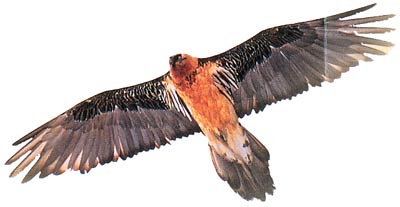
The Bearded Vulture is the only animal that feeds almost exclusively on bone (70-90% of its diet). In Crete, the shepherds call it the “Bone-eater” (“kokalas”) as they have watched the bird breaking bones in a very characteristic way since the old times. The bird throws the larger bones from a height on to rocky-slopes in order to break them, and immediately descends after them in a characteristic spiral way. If the bone does not break the first time, the method is repeated many times until the bone finally breaks. The bird then eats the bone pieces starting with the bone marrow. The smaller bones are swallowed whole, as the bird’s gastric fluids are so strong that they can digest bone easily. This dietary habit seems odd, but once bones have been digested, they are a nutritious and easily storable type of food; in addition, the bird faces minimal competition for this type of food.
The Bearded Vulture – Dangers & Threats. The main threats for the species include lack of food, illegal use of poisoned baits set for wolves, foxes, jackals and crows, habitat destruction and in degradation, and illegal persecution. In mainland Greece, the main reasons for the decline of the population were lack of food due to pastoral decrease, use of poisoned baits for the large carnivores and habitat degradation or loss because of changes in the land use due to the creation of mines, ski centres and hotels.
On the other hand, the main threats in Crete are illegal persecution and high-degree of disturbance, especially during the last years when access even to the most isolated areas became easy through the establishment of a dense network of mountain tracks.
The Bearded Vulture – Conservation Project in the framework of LIFE – NATURE 1998 program, the Natural History Museum of Crete and the Hellenic Ornithological Society are implementing a project on the “Conservation of the Bearded Vulture (Gypaetus barbatus) in Greece”.
The project started in October 1998 and will be completed by the end of November 2001. the project is being implemented in 10 mountainous areas of Greece that belong to the “Natura 2000” ‘Network. Seven of them are located in Crete (Mountains Selinou, Lefka Ori, Asfendou-Kallikraris, Psiloritis, Kedros, Asterousia, Dikti) and three in mainland Greece (Parnassos, Giona, Olympus). These areas represent the last remaining refuges for the species in Greece.
The aim of the project is the conservation of the Bearded Vulture in Greece. This will be achieved through the undertaking of urgent measures for the protection of the species, the detailed monitoring of the species’ population and the protection of all the “NATURA 2000” Network sites where the species is found. By the end of the project a permanent legal status will be established and specific management measures will be implemented in all these sites.
During the implementation of the project, emphasis will be given to the following issues:
- Conservation of the Bearded Vulture and protection of its habitats in some areas through the preparation of Management Plans and Specific Environmental Studies (which will lead Presidential Decrees) for those sites.
- Determination of the exact species status as well as its breeding activity at national level.
- Investigation of the possibility of the species’ recovery and/or reintroduction, where meaningful and feasible.
- Undertaking a set of specific measures – actions, targeted on the survival of the Bearded Vulture in Crete and mainland Greece, such as:
1. Encouragement of traditional pastoralism and promotion of sustainable grazing systems and land use.
2. Provision of supplementary food for the Bearded vulture in suitably selected sites.
3. Patrolling and warding of the most important sites for the species, e.g. breeding, roosting and foraging areas.
4. Cooperation with Non-Governmental Organizations (NGOs), Associations and Local Authorities in areas where the project is implemented, for achieving better results on the species’ conservation.
5. Inform and educate local people through the production and distribution of information material (leaflets, video, slide series), the organization of seminars and Lectures, and the establishment of Information Centers in strategic places around Greece.
6. Dissemination of the results.
* this article has been republished with the kind permission of the Natural History Museum of Heraklion
© explorecrete.com All Rights Reserved. Reproduction or copying without permission is prohibited.

